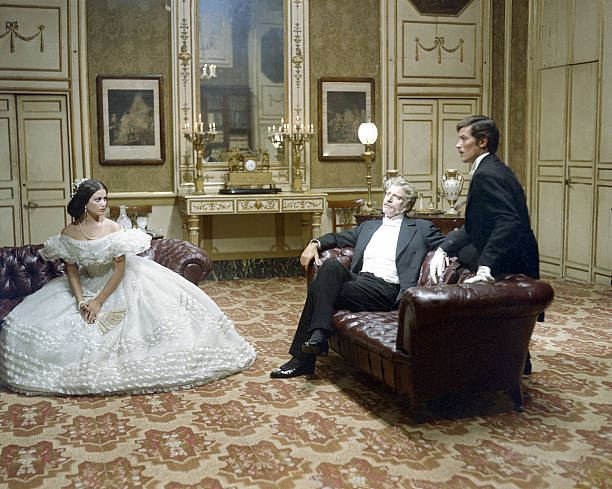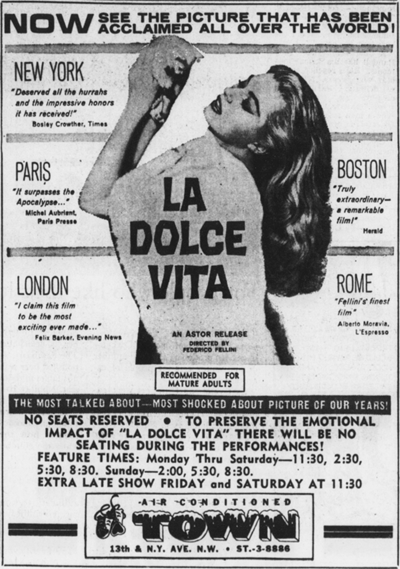Cannes Film Festival: a Look Back at the 1960s Palme D’Or Winners

The 1960s Palme d'Or winners at Cannes revolutionized cinema with bold social commentary and artistic innovation. You'll uncover groundbreaking films like Fellini's "La Dolce Vita," which challenged traditional values and sparked Vatican controversy. Brazil made history with "O Pagador De Promessas," while shared winners "Une Aussi Longue Absence" and "Viridiana" pushed creative boundaries. Visconti's "Il Gattopardo" captured aristocratic decline in stunning detail.
These seminal works set new standards for politically engaged storytelling that continue to influence modern cinema.
Image: karel leermans, Palmed'or, CC BY-SA 4.0
The Cultural Impact of La Dolce Vita (1960)
Few films have shaped cultural consciousness quite like Federico Fellini's La Dolce Vita (1960), which altered the terrain of European cinema and modern society. While the film sparked controversy at its Festival debut, with the Vatican condemning its perceived immorality, you'll find its exploration of modern disenchantment through Rome's milieu remains powerfully relevant today.
Through Marcello Mastroianni's portrayal of a jaded chronicler, alongside memorable performances by Anouk Aime and Anita Ekberg, La Dolce exemplified Italian neorealism while capturing the emerging counterculture of the 1960s. The film's commercial success, despite initial scandal, proves its resonance with audiences seeking authentic reflection of societal evolution. You can still see its influence in contemporary cinema, as it established both a distinctive visual style and coined the term "Dolce Vita" that defines a particular lifestyle of glamorous excess. Much like the French New Wave directors who emerged during the same period, Fellini challenged traditional cinema by emphasizing social realism and innovative filming techniques.
A Tale of Two Winners: Une Aussi Longue Absence and Viridiana (1961)
In a historic first for the Cannes Film Festival, the 1961 Palme d'Or was shared between two pioneering films: Henri Colpi's Une Aussi Longue Absence and Luis Buñuel's Viridiana. These groundbreaking Palme d'Or winners couldn't have been more different in their approach to storytelling.
Colpi's debut feature investigated post-war trauma through a poignant love story, enhanced by Georges Delerue's haunting score.
In contrast, Buñuel's controversial chief work followed a devout young woman's dark journey after being seduced by her uncle, leading her on a path of redemption through charitable works. The film's sacrilegious themes drew fierce opposition from the Catholic Church, resulting in a last-minute screening at the festival.
Despite their contrasting narratives, both films exemplified the artistic innovation and narrative courage that would define 1960s cinema. Much like The Maltese Falcon, these films pushed boundaries in storytelling through their complex characters and morally ambiguous themes.
Brazilian Cinema Breakthrough: O Pagador De Promessas (1962)
View this post on Instagram
Breaking new ground for Latin American cinema, O Pagador de Promessas (The Given Word) claimed Brazil's first Palme d'Or at the 1962 Cannes Film Festival. This groundbreaking achievement at Festival de Cannes transformed the international perception of Brazilian cinema, placing it firmly on the global stage.
Director Anselmo Duarte's powerful social critique follows a peasant's spiritual quest, carrying a cross as heavy as Christ's to save his dying donkey. Through this naive protagonist, you'll discover a compelling narrative that challenges societal institutions and religious conventions.
Like other films of the era, it employed creative storytelling techniques to subtly critique political and social injustices while evading government censorship.
Key aspects of O Pagador de Promessas that captivated Cannes:
- Skilled portrayal of religious devotion and societal conflict
- Bold examination of institutional power structures
- Innovative storytelling from a Brazilian viewpoint
- Authentic representation of Latin American cultural dynamics
The Aristocratic Decline in Il Gattopardo (1963)

Expertly capturing the twilight of Sicily's aristocracy, Luchino Visconti's Il Gattopardo (The Leopard) earned the Palme d'Or at the 1963 Cannes Film Festival. This skilled adaptation of Giuseppe Tomasi di Lampedusa's novel brings together an impressive cast including Burt Lancaster, Claudia Cardinale, and Alain Delon.
You'll be transported to a meticulously recreated 19th-century Italy, where the film chronicles the decline of the Italian aristocracy amid profound social changes. Through seven months of precise historical reconstruction, Visconti crafted a rich visual artwork that illuminates the complex shift between old and new social orders. The attention to detail in depicting aristocratic opulence makes this historical fresco particularly compelling.
Today, you can experience this landmark examination of societal transformation through various VOD platforms.
The Rise of Social Commentary in 1960s Cinema
The 1960s marked a vital era for the Cannes Film Festival, as Palme d'Or winners increasingly wielded their narratives as powerful tools for social criticism. Films like La Dolce Vita and Viridiana pushed boundaries by challenging traditional values and exposing societal flaws.
While directors like Michelangelo Antonioni investigated alienation, others tackled pressing issues:
- Religious hypocrisy and institutional corruption in The Given Word
- Post-war trauma and displacement themes in The Long Absence
- Youth rebellion and anti-establishment sentiment in If..., featuring Vanessa Redgrave
- Cultural materialism critique in UN HOMME ET UNE FEMME
These pioneering films demonstrated cinema's power to spark meaningful dialogue about societal issues. Their success established a new precedent for politically engaged storytelling, influencing generations of filmmakers to use their craft as a medium for social change.
Artistic Innovation and Technical Achievement
During this pivotal decade, Palme d'Or winners revolutionized cinema through pioneering technical achievements and daring artistic choices. You'll notice how directors like Lindsay Anderson expertly experimented with color and black-and-white sequences, creating a visual language that perfectly captured the era's shifting social dynamics.
The innovative use of color became a defining characteristic of 1960s cinema, with filmmakers employing chromatic choices to express deeper symbolic meanings. If..., Anderson's groundbreaking work, exemplified this technical evolution by seamlessly blending different visual styles to portray the clash between tradition and counterculture.
This artistic approach would influence future visionaries, paving the way for the bold color experiments you'd later see in films like A Clockwork Orange. The transformation was so complete that by the 1970s, color had become the undisputed standard in filmmaking.
New Wave Cinema's Influence on Cannes Winners

French New Wave cinema swept through the 1960s Palme d'Or selections like a cultural revolution, building upon the technical innovations of the era with its rebellious spirit and unconventional storytelling. You'll find this influence perfectly captured in Fellini's "La Dolce Vita," which set the tone for a decade of pioneering films at Cannes.
The new wave movement's impact on Palme d'Or winners manifested through:
- Bold challenges to traditional narrative structures
- Raw exploration of youth counterculture and social rebellion
- Fresh approaches to cinematography and editing techniques
- Direct criticism of established social institutions
You can trace this revolutionary spirit through winners like Buñuel's "Viridiana" and Anderson's "If...," which embodied the movement's experimental nature. These films didn't just win awards - they redefined what cinema could achieve, making the 1960s a pivotal decade for the festival.
The Evolution of European Filmmaking During the Decade
The period's influence continues to echo, as contemporary filmmakers like Michael Haneke blend traditional and modern techniques, demonstrating how the 1960s' experimental spirit lives on in today's cinema.




